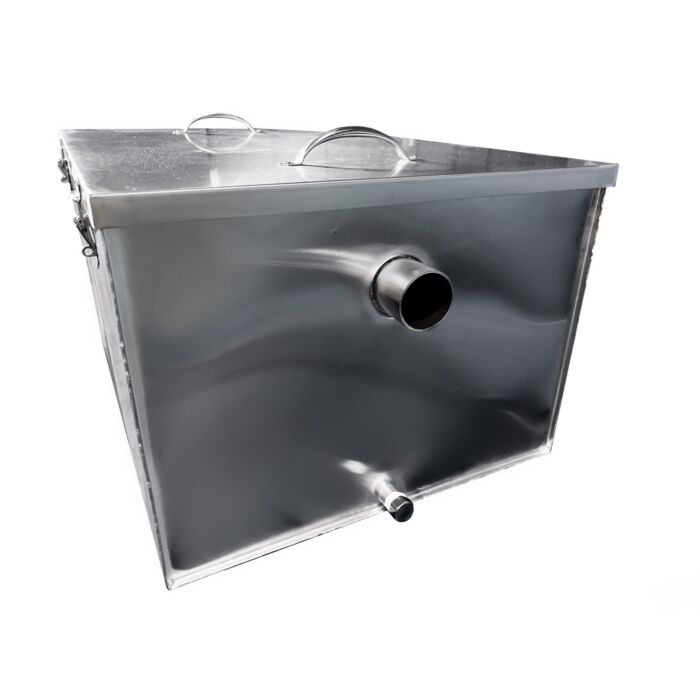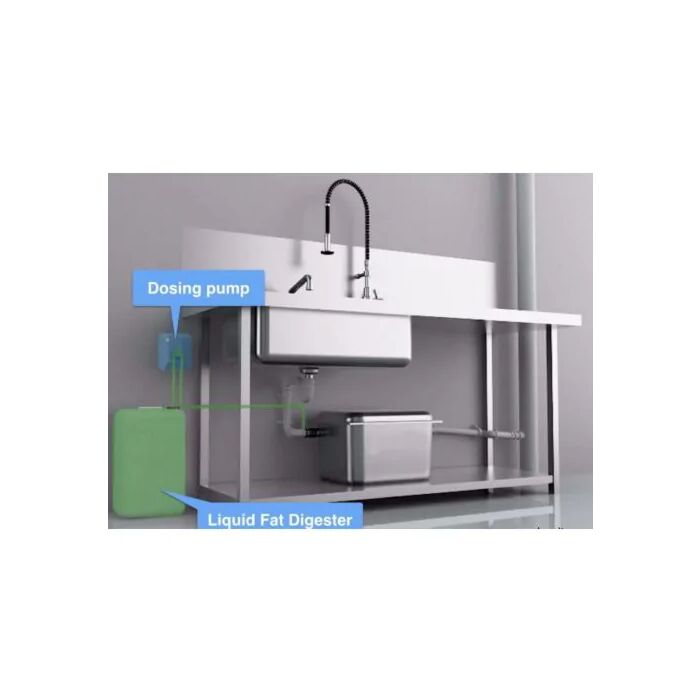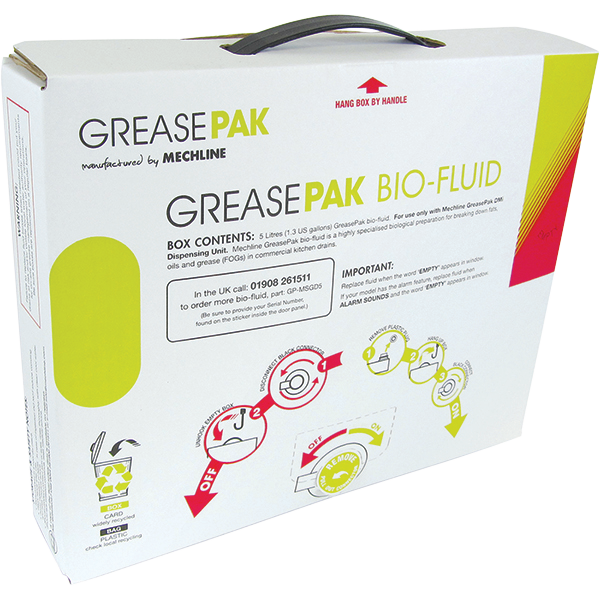
Grease traps are essential in modern kitchens, ensuring that fats, oils, and grease (FOG) don't clog the sewage systems. One of the most effective ways to manage these substances is through dosing systems. In this post, we will delve into the different types of dosing systems used in conjunction with grease traps, how they function, and where they should be installed.


What is a biological dosing system and how does it work?
A biological dosing system utilises bacteria to break down FOG into simpler, harmless compounds. The process involves introducing a specific strain of non-pathogenic bacteria into the grease trap. These live bacteria are selected for their ability to digest and consume FOG efficiently.
The system works on a simple principle: it continually doses the grease trap with a biological solution, often in liquid form. The bacteria in the solution feast on the FOG, multiplying and establishing colonies. As they break down the waste, they convert it into water and carbon dioxide, significantly reducing the amount of grease in the trap and the frequency of manual cleaning required.
What is an enzyme dosing system and how does it work?
Enzyme dosing systems, on the other hand, employ enzymes to tackle the FOG problem. Enzymes are biological molecules that act as catalysts, speeding up chemical reactions. In the context of a grease trap, enzymes are introduced to accelerate the breakdown of FOG.
The dosing system typically dispenses a concoction of lipase, amylase, and protease enzymes into the trap. Lipase breaks down fats, amylase targets starches, and protease deals with proteins. The enzymes cleave the large, complex molecules of FOG into smaller molecules that are more soluble in water.
While enzyme systems break down FOG into smaller particles, they don't use live organisms and so don't completely consume fats, oils and grease as biological systems do. The smaller particles flow more easily and further through drainage systems however may still cause a problem further down the line, over an extended period of time.
Can you combine enzymatic and biological dosing systems?
Yes, it is possible to combine enzymatic and biological dosing systems, creating a bio-enzymatic approach. This combination harnesses the benefits of both systems: the enzymes quickly break down FOG into smaller particles, which the bacteria can then consume more easily. This dual action can lead to a more efficient and effective reduction of FOG in the grease trap.
Where do you install a bio-dosing, enzyme-dosing, or bio-enzymatic dosing system?
These dosing systems are typically installed directly into the passive (manual) epoxy coated or stainless steel grease trap or into the drainage system that feeds into the trap. The installation point is crucial for ensuring that the enzymes or bacteria have enough contact time with the FOG before the mixture enters the sewage system. Read more about Grease Digesting Bio-Dosers as Standalone Solutions.
The dosing units are often set up to release the biological or enzymatic solution at regular intervals, usually during the establishment's off-hours, to maximise efficiency and reduce interference with kitchen operations.
FFD Grease Management Solutions Grease Trap Bio Dosing System Recommendations
When it comes to grease management solutions, FFD recommends the GreasePak system. This system is designed to be user-friendly, effective, and environmentally friendly.
What is GreasePak equipment and how does it work?
GreasePak is a bio-enzymatic dosing system that dispenses a multi-strain bacterial formula into the grease trap. This system includes a wall-mounted dosing module, which houses a control unit and a cartridge containing the bacterial solution.
The GreasePak unit doses the grease trap with the bacterial solution at predetermined intervals, ensuring that there are always active bacteria to consume the FOG. The system works independently, requiring minimal intervention from staff apart from the replacement of the cartridge.


Refill packs and accessories
GreasePak's refill packs contain the bacterial solution and are easy to replace. The solution is non-toxic, non-caustic, and safe for use in food-preparation environments. Accessories for the GreasePak system may include mounting brackets, battery packs for areas without easy access to power outlets, and alarm systems to indicate when a refill is necessary.
In conclusion, whether you choose a biological, enzymatic, or a combined bio-enzymatic dosing system, each plays a vital role in managing FOG in commercial kitchens. With systems like GreasePak, the process becomes hassle-free, allowing kitchen staff to focus on what they do best – cooking great food.

Leave a Comment
Your email address will not be published. Required fields are marked *